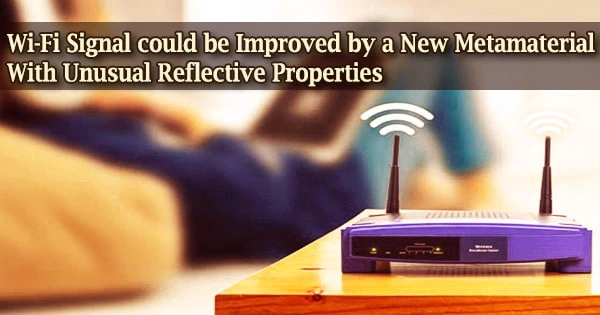The future of wireless communications may involve your workplace wall. Professor George Eleftheriades and postdoctoral colleague Sajjad Taravati of the University of Toronto’s Faculty of Engineering have demonstrated how metamaterial reflectors may channel light to allow more wireless data to be delivered over a single frequency.
The bandwidth of current networks may double as a result of this recently discovered trait known as “full-duplex nonreciprocity,” according to their projection. The team’s proof of concept’s intellectual property (IP) has just been given to the Montreal-based business LATYS Intelligence Inc., which Gursimran Singh Sethi, a graduate of Engineering, cofounded.
“This is happening,” says Eleftheriades. “Within the next three to five years this technology will be adopted.”
The building components that make up metamaterials are smaller than the light waves that they are intended to alter.
The team’s substance is made up of repeating unit cells that are 20 millimeters in size. As a result, light with wavelengths several centimeters or longer, such microwaves or the sort of light used to transport cell phone communications, appears to form a single, homogeneous object called a metasurface.
The metasurface causes microwaves to reflect, but they do so in an odd way that is known as nonreciprocity.
“When you’re driving and look in the rear-view mirror, you see the driver behind you. That driver can also see you because light bounces off the mirror and follows the same path backwards,” says Eleftheriades.
“What’s unusual about nonreciprocity is that the incident angle and the reflected angle are not equal. To be specific, the backward path for the wave is different. Basically, you can see someone, but you cannot be seen.”
These metamaterials also have the ability to steer and amplify incoming beams, which is beneficial in a variety of applications, such as solar panels, medical imaging, satellite communications, and even emerging cloaking technology. The future of wireless communication may be significantly impacted by emerging intelligent metasurfaces that have the ability to guide the reflecting beam.
Tunable, asymmetric radiation beams in both the reception and transmission states have incredible potential to address some of the most pressing and major challenges in the wireless communication industry.
Gursimran Singh Sethi
“In everyday experience,” says Eleftheriades, “a microwave emitted from a tower reaches its intended terminal point, like a modem, and then goes back to the telecommunication station. That’s why, when you have a conversation on your cellphone, you do not talk and listen on the same channel. If you did, the signals would interfere and you wouldn’t be able to separate your own voice from the voice of your partner.”
There are only “half-duplex” links in 5G today. In order to minimize interference, the 5G transmission essentially uses slightly different frequencies, or the same frequency but at a slightly different time. The user is not aware of the time delay.
One can converse and listen simultaneously on the same channel thanks to Eleftheriades and Taravati’s full-duplex architecture. It spatially separates the forward and backward routes within the same frequency, which doubles the system capacity, in contrast to other metamaterial technology. They describe their study in a piece published in Nature Communications.
While full-duplex capabilities is present in military-grade radars, it is not suited for civilian applications like mobile devices due to its current design. This is due to the fact that existing full-duplex transceivers are constructed from heavy, pricey components like ferrite and biasing magnets.
“We propose a completely different mechanism. No magnets or ferrites. Everything is done using printed circuit boards and silicon electronic components such as transistors,” says Elefthreriades.
The development team at LATYS was excited by the wide range of applications that these intelligent metasurfaces could have.
“Tunable, asymmetric radiation beams in both the reception and transmission states have incredible potential to address some of the most pressing and major challenges in the wireless communication industry,” says Sethi.
“By spatially decoupling the receive and transmit paths, we can create ‘true full-duplex systems’ that can support bidirectional communication at the same time and the same frequency. This will allow LATYS products and prototypes to gain an edge over the competition and much traction, especially in radio-hostile environments such as industrial automation, IIOT, and 5G applications.”
“Just imagine,” says Eleftheriades, “as we’re integrating some of these surfaces in the walls of buildings, researchers are hard at work on the next iteration of ‘better.’”















